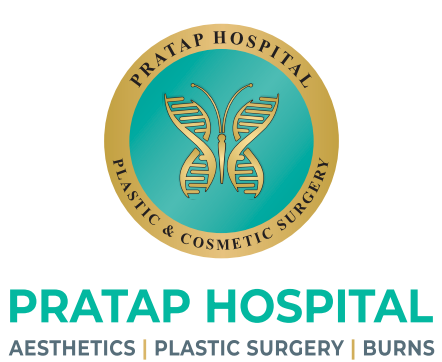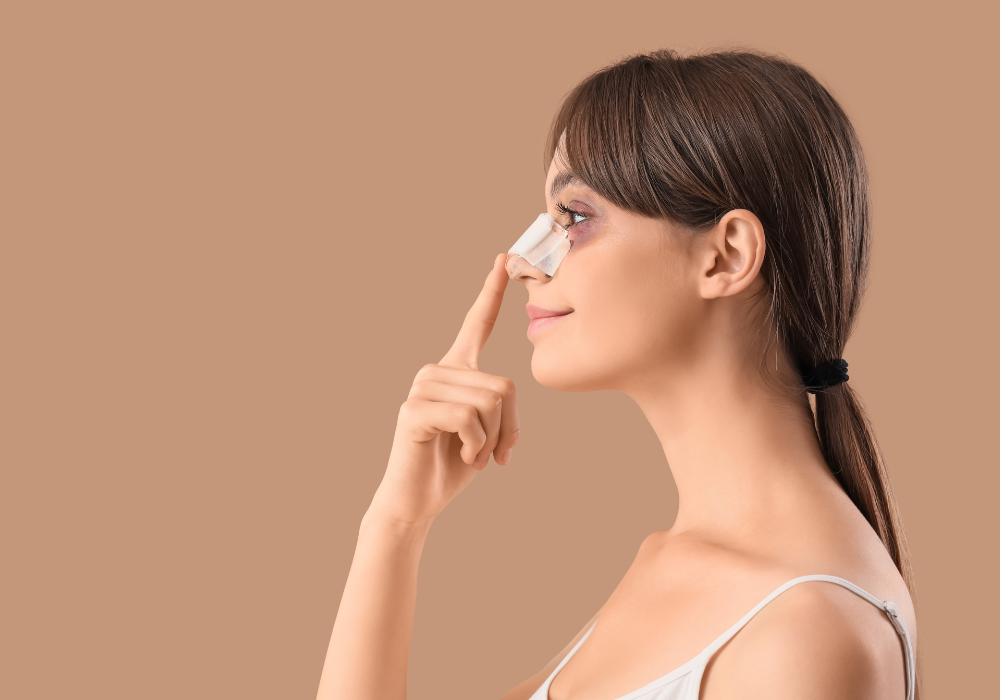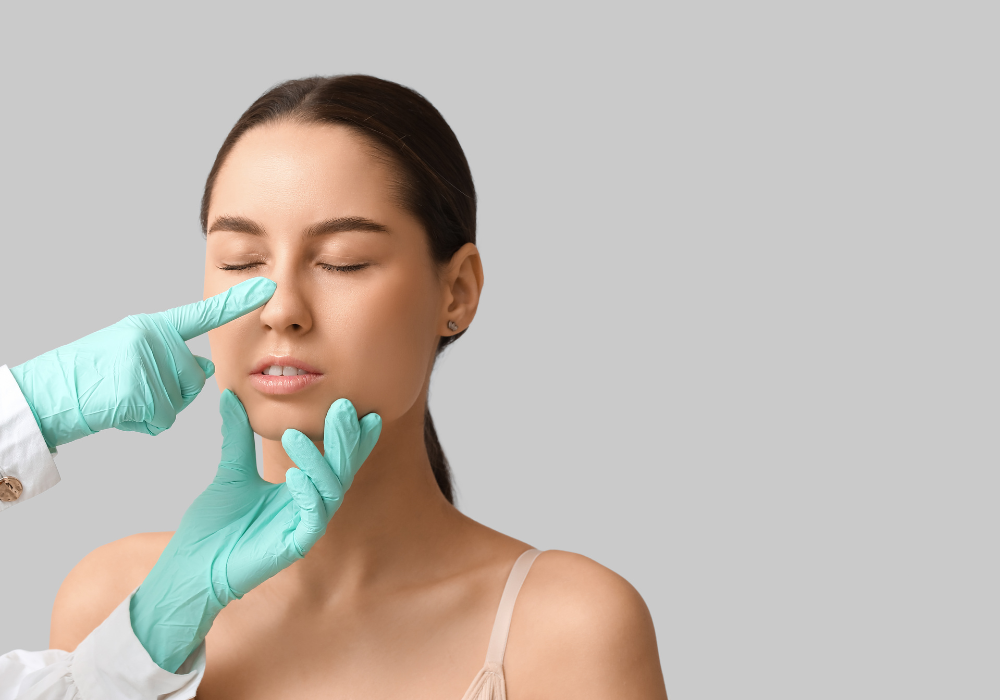
- Home
- About
- Surgical
- Non Surgical
- Burns
- Cranio-maxillofacial surgery
- Gallery
- Contact
Rhinoplasty (Nose Reshaping Surgery)
Rhinoplasty, commonly known as nose reshaping surgery, is a cosmetic and reconstructive procedure designed to enhance the appearance and proportion of the nose while maintaining or improving nasal function. It can correct aesthetic concerns such as a wide or crooked nose, a drooping or enlarged nasal tip, or flared nostrils — and can also help improve breathing difficulties caused by structural problems inside the nose.

- Why People Choose Rhinoplasty
- Who is a Good Candidate for Rhinoplasty?
- Pre-Surgical Evaluation
- Surgical Techniques Used
- The Surgical Process
- Frequently Asked Queries
Rhinoplasty can be performed for cosmetic or functional purposes — and often, both.
| Cosmetic Reasons | Functional Reasons |
|---|---|
| Nose appears too large or too small for the face | Difficulty breathing due to deviated septum |
| Drooping or bulbous nasal tip | Structural deformity from injury |
| Wide or flared nostrils | Congenital nasal obstruction |
| Crooked or asymmetrical nose | Post-traumatic nasal collapse |
| Dorsal hump or depression on bridge | Nasal valve collapse or airway narrowing |
You may be a suitable candidate for rhinoplasty if you meet the following criteria:
You are 15 years or older, and your facial growth is complete.
You are in good physical health with no untreated medical conditions.
You do not smoke, or are willing to quit before and after surgery.
You have realistic expectations about the outcome.
You wish to improve one or more of the following:
Nasal width, height, or tip shape
Nostril asymmetry or excessive flare
Crooked nose or post-injury deformity
Breathing obstruction due to internal deviation
Before surgery, a detailed consultation and physical examination are performed to ensure safety and optimal results.
| Evaluation Step | Purpose |
|---|---|
| Medical History Review | Assess previous surgeries, allergies, breathing issues, and medications. |
| Facial Analysis | Study facial proportions and skin quality to plan natural results. |
| Internal Nasal Examination | Evaluate septum, turbinates, and nasal valves for obstruction. |
| Imaging / Photography | Capture pre-operative photos for surgical planning and progress tracking. |
| Discussion of Goals | Align patient expectations with achievable outcomes. |
| Surgical Planning | Decide between open or closed technique, anesthesia type, and approach. |
Rhinoplasty can be performed using two main approaches, depending on the patient’s needs and complexity of correction.
| Technique | Description | Best For |
|---|---|---|
| Open Rhinoplasty | Small incision made across the columella (base of the nose). Allows full visualization of nasal structures. | Major reshaping, correction of deformities, or revision rhinoplasty. |
| Closed Rhinoplasty | All incisions made inside the nostrils. No external scar. | Minor shape corrections and simple nasal tip refinement. |
In some cases, Septoplasty (correction of deviated septum) is combined with rhinoplasty to improve breathing and nasal airflow.
Rhinoplasty is typically performed under local or general anesthesia, depending on the extent of correction.
Procedure Steps:
Anesthesia Administration – to ensure patient comfort.
Incision Placement – open or closed approach as planned.
Structural Reshaping – bone and cartilage are carefully sculpted or repositioned.
Cartilage Grafting (if required) – taken from septum or ear to support nasal framework.
Wound Closure – fine sutures used for minimal scarring.
Splint and Dressing – applied to maintain shape and reduce swelling.
Duration: 2 to 3 hours
Hospital Stay: Day-care or overnight observation
Anesthesia: Local with sedation or General anesthesia
Recovery and Aftercare
Recovery from rhinoplasty is gradual and well-managed with post-operative support at Pratap Hospital.
| Timeline | Expected Progress |
|---|---|
| Day 1–3 | Mild swelling, nasal congestion; rest with head elevated. |
| Day 4–7 | Bruising begins to fade; nasal splint remains in place. |
| Day 8–10 | Splint removed; most patients can return to work. |
| Week 3 | Resume light exercise; swelling continues to subside. |
| Month 1–3 | Nose begins to refine; breathing improves. |
| Month 6–12 | Final nasal shape stabilizes and results are visible. |
Aftercare Instructions:
Avoid blowing your nose for the first two weeks.
Do not bend, lift, or perform strenuous activities for 3 weeks.
Protect from direct sunlight and use sunblock regularly.
Sleep with your head elevated for faster healing.
Attend all follow-up visits as scheduled.
Results and Longevity
Initial improvement can be seen within a few weeks, but final results may take up to 12 months as tissues settle.
Rhinoplasty results are long-lasting, though minor changes can occur with aging.
Occasionally, a touch-up (revision) may be advised for fine refinements.
The goal is a natural-looking nose that blends harmoniously with your facial features and enhances overall confidence.
When can I resume work?
Most patients return to work within 7–10 days after surgery.
When can I exercise again?
Light exercises can start after 3 weeks; avoid contact sports for 2 months.
Will there be scars?
In closed rhinoplasty — none. In open rhinoplasty — a fine scar hidden at the base of the nose, which fades with time.
Are the results permanent?
Yes, results are permanent except for minor natural changes with aging.
Why Choose Pratap Hospital for Rhinoplasty
✅ Highly qualified plastic and reconstructive surgeons
✅ Advanced operation theatre with modern safety systems
✅ Use of 3D imaging and precision tools for accurate planning
✅ Personalized treatment plans ensuring natural aesthetics
✅ Dedicated post-surgery care and follow-up support
Book a Consultation
If you’re considering rhinoplasty for aesthetic enhancement or breathing improvement, schedule a consultation at Pratap Hospital today.
Our team will guide you through every step — from evaluation and planning to surgery and recovery — ensuring safe, effective, and natural results.
📍 Pratap Hospital — Reconstructive, Aesthetic & Microsurgery Centre
📞 Call / WhatsApp: +91 94929 69899
📧 Email: drpratapshospital@gmail.com

Before And After Results















